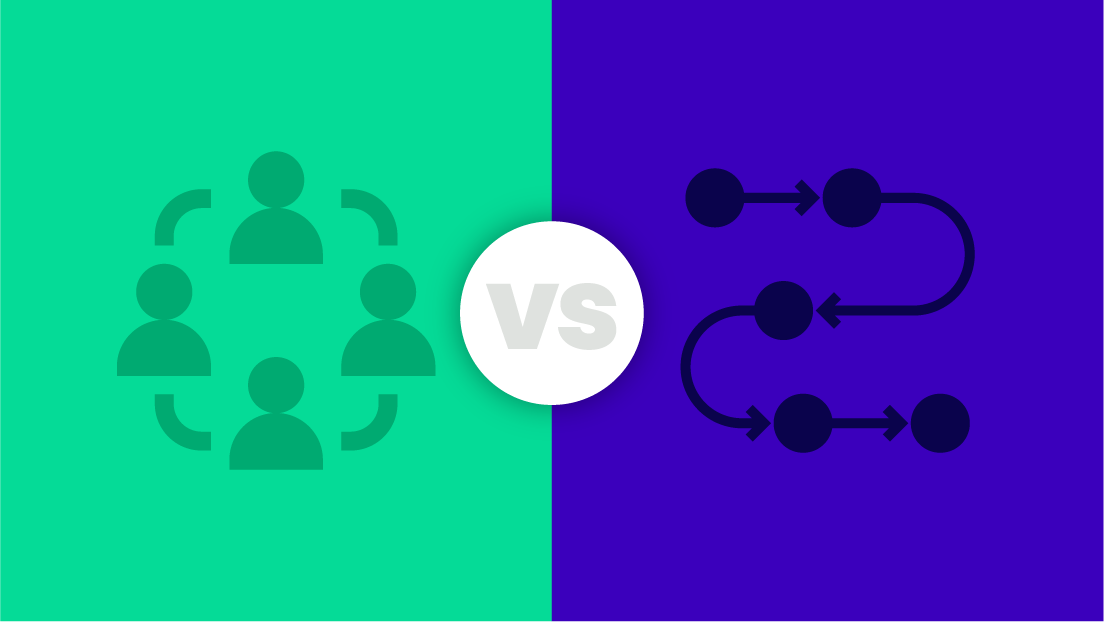Key Takeaways
- Proactive follow-ups and automated reminders are essential to manage a delinquent payment before it escalates.
- Businesses should implement segmentation strategies to prioritize collection efforts based on risk and overdue amounts.
- Accepting a credit card for delinquent accounts can increase repayment rates and reduce friction during collections.
- Once a delinquent account is paid in full, follow-up documentation, status updates, and reconciliation processes must be executed promptly to maintain customer trust and internal accuracy.
- Automation not only improves efficiency but significantly reduces manual errors, follow-up delays, and the volume of delinquent accounts overall.
One of the most effective ways of increasing your company’s cash flow is by ensuring that customers pay their invoices on time. Proactively reaching out to customers with overdue invoices and prior, sending reminders before the due date offering incentives for early payments, and suggesting an upfront deposit are all different methods of proactively defending against delinquent accounts.
The method you choose will depend on a range of factors, including how you define a delinquent account, the level of delinquency, how it impacts your organization, and whether or not it affects your company’s credit report.
What are Delinquent Accounts?
Despite what you might think, this is not a simple straightforward question to answer. It might seem like a silly question to ask in a blog dedicated to topics about accounts receivables, but there actually is no standard consensus on exactly when an account is categorized as delinquent. Although delinquent accounts are typically defined as accounts that have unpaid balances or past due dates, some companies consider a customer one day past due delinquent, while others don’t see accounts as delinquent or at least don’t consider it a problem until they have been past due for some time.
How Can Delinquent Accounts Impact Your Organization?
At a certain point, however, unpaid balances can affect a company’s cash flow, creating a snowball effect of late payments to suppliers or lenders, which in turn affect the company’s relationship with its vendors.
It can also impact your:
- Invoice-to-cash cycle. It extends the time period until a receivable is collected, increasing the risk of negative cash flow.
- Need for financing. A decrease in cash flow means your company may struggle to cover its operating cost or payments to suppliers. Invoice financing and invoice factoring are available for companies to receive immediate cash in turn for selling unpaid invoices.
- Company valuation. Delinquent accounts increase the amount of bad debt your company accumulates and its perceived risk for investors. It also leads to opportunity loss in terms of capital investment.
- Reduced liquidity. Not having extra cash available means your company can’t deal with unforeseen emergencies when they arise.
By having a policy in place for dealing with delinquent accounts and reducing them, companies can proactively protect against these situations.
How Can Organizations Handle Delinquent Accounts?
The most effective methods for organizations to defend against delinquent accounts are as early in the invoicing process as possible, as soon as the invoice is sent to a customer.
Streamline your dunning workflows
Create a dunning email template for every step of the A/R process. Beyond sending invoices and requests to collect receivables, a workflow should send automated reminder emails, clear instructions for payment, offer different payment options, and emails explaining the consequences of overdue invoices. In addition, you can create messaging for different demographics, sending emails tailored to specific types of customers. This could range from customers located in different geographic regions to customers with a history of late payment and of course customers will have different payment terms.
Clearly communicate payment terms
Your dunning emails should clearly state details such as: accepted payment methods, terms, due dates, and contact information. These terms might also include your credit limit policy and your company’s policy for outstanding invoices. Clearly communicating payment terms also helps avoid disputes and overdue invoices that might arise from ambiguous terms and conditions of an agreement.
Send a reminder before invoices are due
Customers aren’t intentionally letting invoices become overdue. Financial departments are often overwhelmed by the number of supplier invoices they are managing – often manually – and simply forget to pay them. And many companies have specific days where they make payments. If you send a reminder BEFORE the invoice is due, you are more likely to catch the customer before the monthly payment day. And just in general, a simple friendly reminder will go a long way, prompting customers to pay as soon as possible.
Get Those Delinquent Accounts Under Control
Struggling with late payments and rising DSO? Discover how top finance teams are transforming A/R with Gaviti. Watch our 2-minute product tour and see how automation can help you recover cash faster, streamline workflows, and eliminate manual follow-ups — no IT required.
Watch the Tour NowInclude all open invoices in the reminder email
For customers that regularly do business with your company, keeping track of different invoices each month can be tiresome. By sending a list of all open invoices in the reminder mail, you’ve made it that much easier for your customer to keep track and potentially pay their invoices. You are effectively reminding them about an invoice multiple times without nagging them.
Offer a variety of payment methods
Make it as easy as possible for customers to pay to avoid delinquent accounts. These should include multiple options for payment (e.g., ACH, credit card, bank transfer) with leading payment processors. Offering more options beyond the standard ones (e.g. check) reduces the friction in the payment process.
Establish a system for late invoices and incentivize early payments
What happens when a customer isn’t able to pay? A standard procedure should be followed for late invoices, along with a policy for escalation, follow-ups, and consequences.
Having options such as “pay later/promise to pay” or paying in installments can also help customers with weaker cash flows, strengthening the customer relationship. You might also consider offering discounts for customers who pay upfront and in full.
Manage customer credit risk
Maintain a clear credit history for each customer so that you can make informed credit decisions and minimize risk. Extending credit to customers who cannot pay can lead to bad debt, write-offs and even legal consequences. Automating the credit management process can also lessen your administrative burden.
The Level of Delinquency on Accounts
Since the definition of a delinquent account is different for each company, it is helpful to categorize them into different levels, generally based on the number of days the account is delinquent. The different levels vary for different companies.
However, the basic levels include:
- 30 Days Delinquent. When an invoice is a month overdue, it is important to follow up with reminders to collect payment.
- 60 Days Delinquent. After 60 days, a company needs to escalate the overdue invoice and the chances of it being paid have now significantly decreased. Escalation may include collections calls or offering payment plans.
- 90 Days Delinquent. After three months, an invoice is considered to be in severe delinquency. Companies may take legal action to pursue payment or consider turning to a debt collection agency.
- 120 Days Delinquent. An invoice that has not been paid four months after the due date is the most severe level of delinquency. Escalation should include warning that once legal action may be pursued, the delinquency is part of the customer’s credit report and updated in the databases of third-party credit report services. At this point, however, some companies may be forced to write the debt off completely.
How Gaviti Helps Manage Delinquent Accounts Effectively
Our goal at Gaviti is to keep delinquent accounts at bay so that they don’t become a problem. Gaviti’s credit application management module helps you do this by tracking all credit-related activities, facilitating audits and maintaining a clear credit history for each customer. Its automated credit request forms allow you to streamline the credit request process as each new customer onboards. Once approved, the credit limit will be set and you will be alerted if the credit limit is exceeded. Once the customer starts doing business with you, their profile includes a risk score which is regularly updated based on their payment history. With all of your customer’s credit-related data related in one place, it’s now easier than ever to optimize your credit management process and deliver greater transparency for both payers and users.
Want to see if Gaviti can reduce the number of overdue invoices in accounts receivable and significantly improve your cash flow? Contact us for more information and book your demo today.
Frequently Asked Questions about Managing Delinquent Accounts in Accounts Receivable
What is the best way to handle delinquent accounts immediately after they become overdue?
The ideal approach includes sending automated reminders and personalized follow-ups while segmenting accounts based on payment history and risk level. Early, consistent communication helps prevent escalation and keeps the customer relationship intact. The most important thing is not to wait until the account is extremely overdue. Be proactive and try and tackle the problem early.
Can delinquent payments negatively impact a company’s credit rating?
Yes, unresolved delinquent payments can damage a company’s credit profile by increasing perceived risk, which may affect future financing, supplier terms, or insurance premiums.
Should businesses accept credit cards for delinquent accounts?
Accepting credit cards for delinquent accounts can expedite recovery and reduce barriers to payment. It offers customers a convenient way to settle debts, especially in time-sensitive situations.
What steps should be taken after a delinquent account is paid in full?
Once a delinquent account is paid in full, send an acknowledgment receipt, update internal systems, remove the account from collections, and, if applicable, restore standard credit terms. This closes the loop and rebuilds client trust.
How can automation reduce the number of delinquent payments?
Automation ensures timely invoicing, personalized follow-ups, and faster escalation. It reduces manual error, improves response rates, and keeps communication consistent, helping businesses stay ahead of potential delinquencies.






















